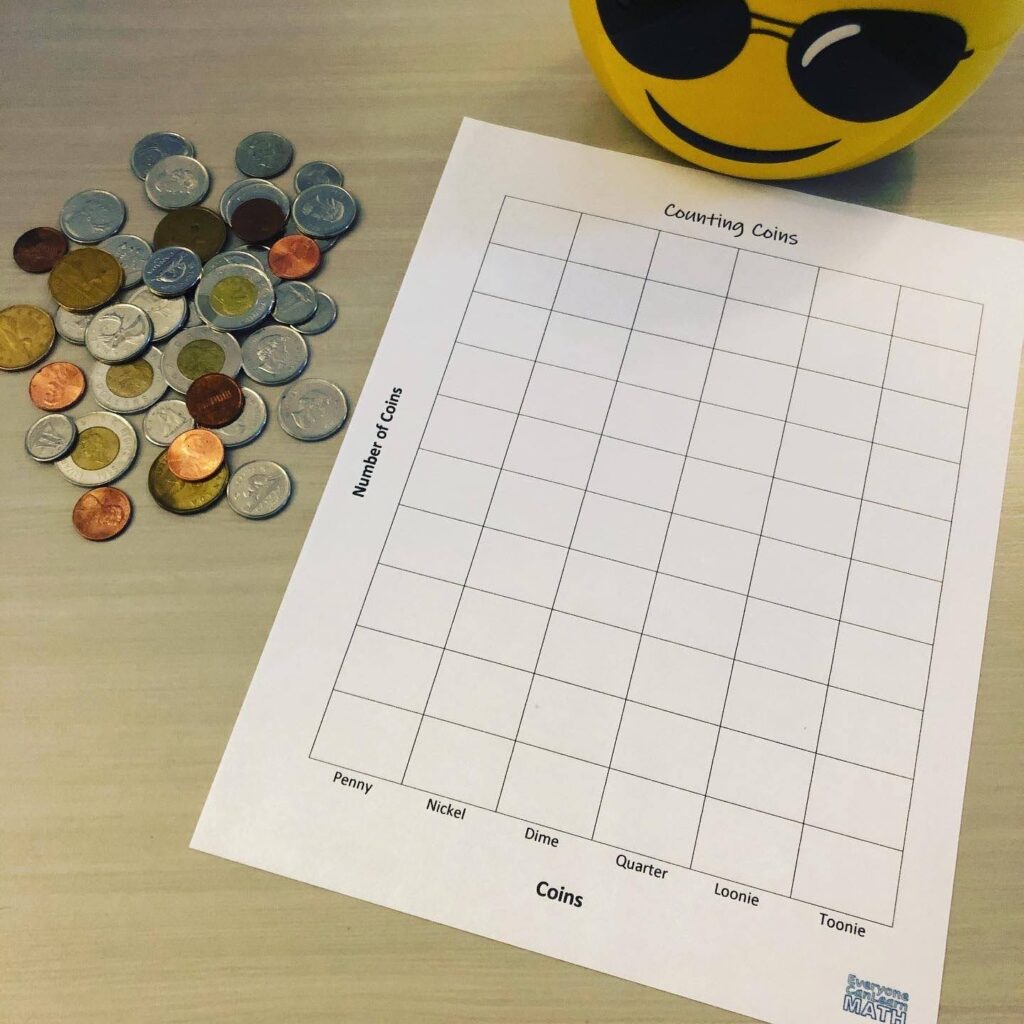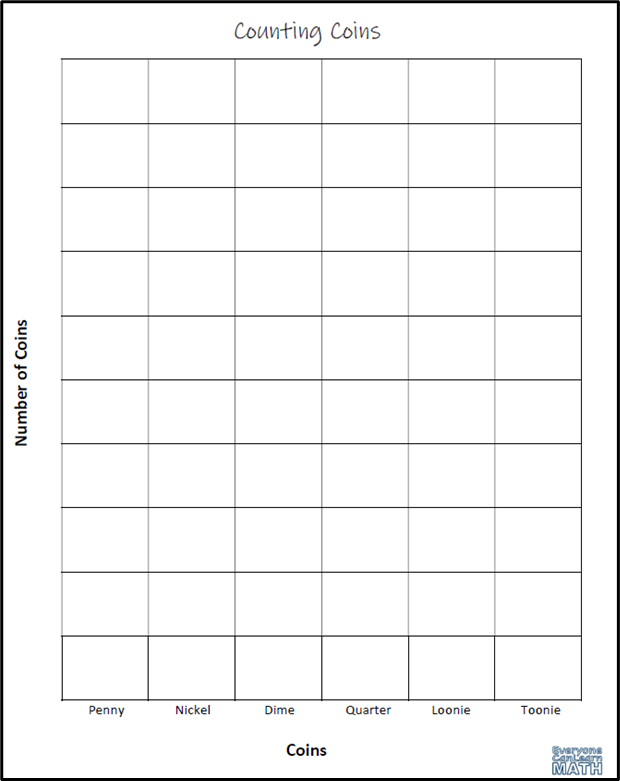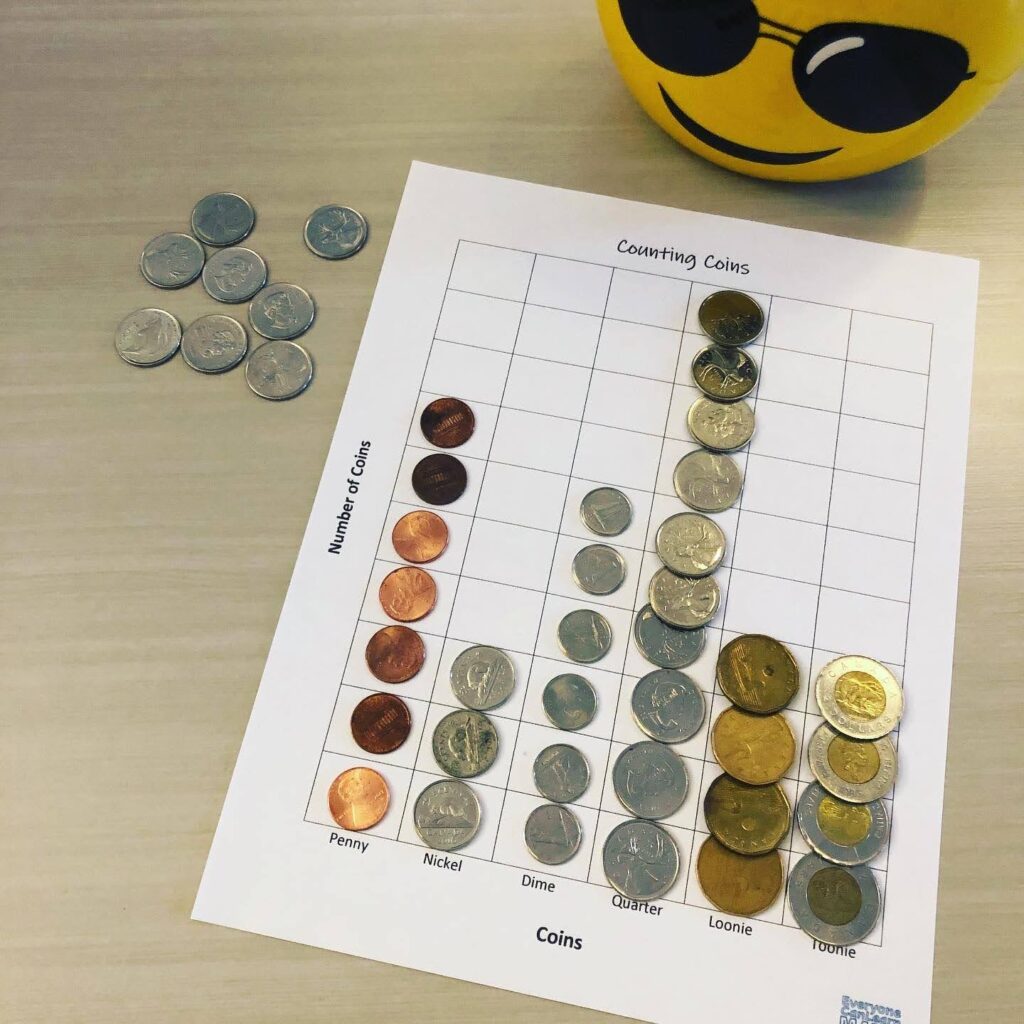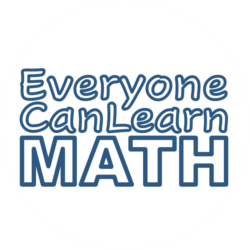I recently shared this activity on #WheresTheMathWednesday over on Instagram and it received a lot of interest from parents and educators looking for an easy, low-prep activity to introduce money to their children and students. The best part about this activity is that it can be tailored to suit your child’s needs and it can be extended in any direction depending on your child’s readiness.
What is #WheresTheMathWednesday?
Every Wednesday, the math community on Instagram posts a way to incorporate math into a pre-chosen theme. Neily from Counting with Kids came up with the hashtag and it has been gaining popularity. She and a group of other accounts agree on a theme and share out math ideas related to that week’s theme. It is a fun way to get new ideas from people all over the world and an excellent reminder that math is everywhere! The activity I am sharing here was posted for our Money theme last week.
Piggy Bank Exploration
We got out one of the kids’ piggy banks for this activity. We opened the piggy bank and poured the contents onto the floor to explore all the coins inside. The first thing we noticed were the pennies! The penny is now obsolete in Canada, but we still have some American pennies laying around since we live near a US border and many people cross over for shopping (pre-Covid times!).
Then, we talked about the Loonie and the Toonie ($1 and $2 coins, respectively) and how the US does not have coins for these values. Instead, they have a $1 bill.
Sorting the Coins

We chose to sort the coins by mimicking a graph. We used this graph printout. Note that this was made for our Canadian coins with the inclusion of the penny. You can download the free PDF here. Otherwise, make your own and include the coins that you have in your piggy bank.

We sorted the coin types and placed them on the grid, using the coins themselves to form the bars of the graph. This works well as an introduction to graphing for children and also works as a visual for sorting and comparing collections.

Possible Extensions
You can choose to end the exploration at this point and your children will have experienced some great engaging hands-on learning.
If your children are ready, consider taking the learning further:
- Discuss the value of each coin. I would start with the cents representation for each value and then move on to the dollar representation when your children are ready.
- Find the total value of each coin column. Again, use cents first, then consider moving on to the dollar representation.
- Find the total value of all the coins together.
- Try splitting the collection in half. How much would each half consist of? Can you split the collection exactly in half? Why or why not?
- Place the coins back into the piggy bank by following a pattern. Choose a pattern for the coins and try to replicate it as the child places the coins into the piggy bank.
We hope you have as much fun exploring your piggy bank collection as we did!
Spread the math love <3
![]()
